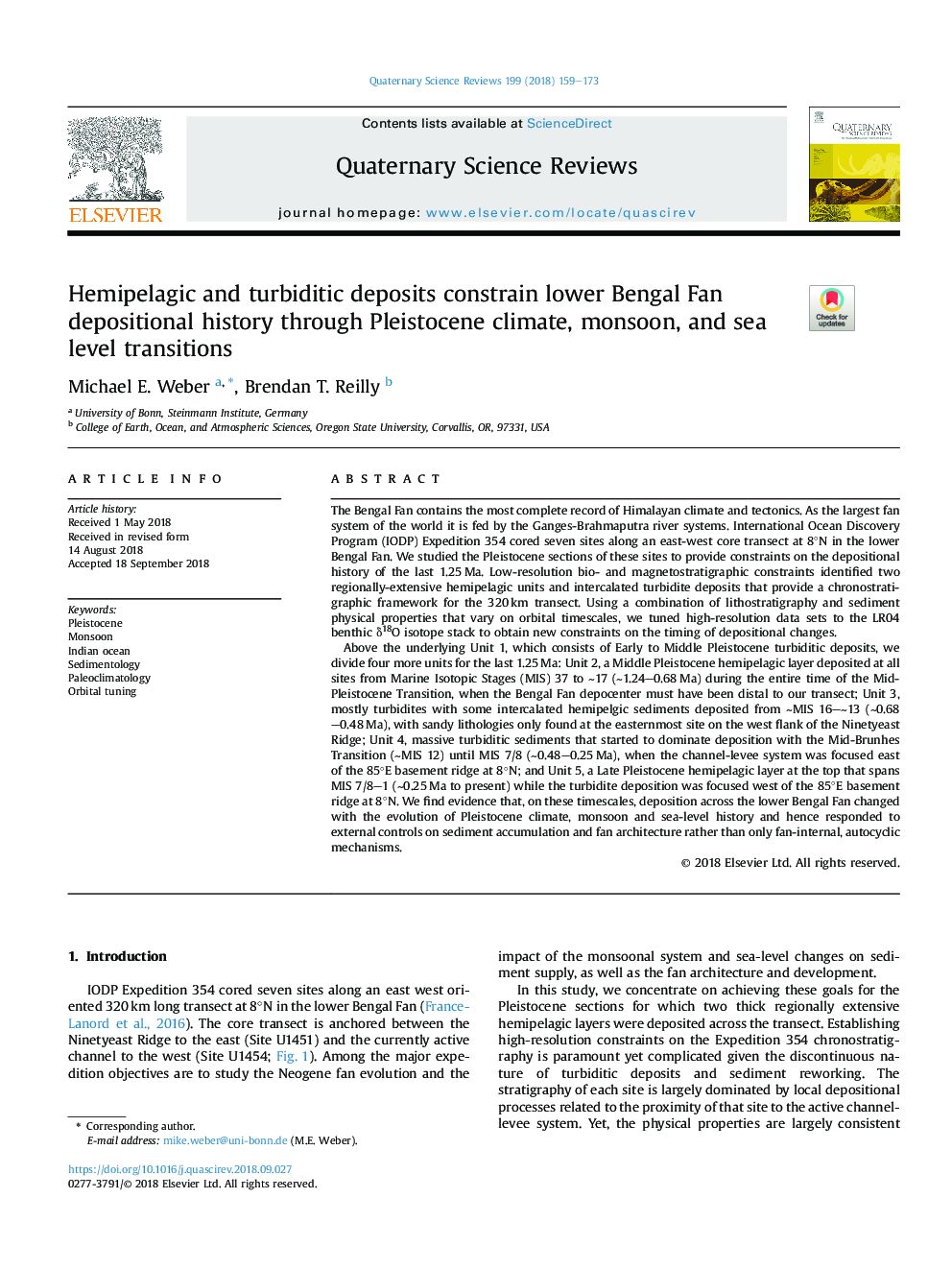| کد مقاله | کد نشریه | سال انتشار | مقاله انگلیسی | نسخه تمام متن |
|---|---|---|---|---|
| 11024630 | 1701102 | 2018 | 15 صفحه PDF | دانلود رایگان |
عنوان انگلیسی مقاله ISI
Hemipelagic and turbiditic deposits constrain lower Bengal Fan depositional history through Pleistocene climate, monsoon, and sea level transitions
ترجمه فارسی عنوان
رسوبات همبند و توربویتی محدود کردن تاریخ انباشت پنبه پایین بنگال را از طریق تغییرات آب و هوایی پلونیستی، موشس و سطح دریا محدود می کند
دانلود مقاله + سفارش ترجمه
دانلود مقاله ISI انگلیسی
رایگان برای ایرانیان
کلمات کلیدی
موضوعات مرتبط
مهندسی و علوم پایه
علوم زمین و سیارات
زمین شناسی
چکیده انگلیسی
Above the underlying Unit 1, which consists of Early to Middle Pleistocene turbiditic deposits, we divide four more units for the last 1.25â¯Ma: Unit 2, a Middle Pleistocene hemipelagic layer deposited at all sites from Marine Isotopic Stages (MIS) 37 to â¼17 (â¼1.24-0.68â¯Ma) during the entire time of the Mid-Pleistocene Transition, when the Bengal Fan depocenter must have been distal to our transect; Unit 3, mostly turbidites with some intercalated hemipelgic sediments deposited from â¼MIS 16-â¼13 (â¼0.68-0.48â¯Ma), with sandy lithologies only found at the easternmost site on the west flank of the Ninetyeast Ridge; Unit 4, massive turbiditic sediments that started to dominate deposition with the Mid-Brunhes Transition (â¼MIS 12) until MIS 7/8 (â¼0.48-0.25â¯Ma), when the channel-levee system was focused east of the 85°E basement ridge at 8°N; and Unit 5, a Late Pleistocene hemipelagic layer at the top that spans MIS 7/8-1 (â¼0.25â¯Ma to present) while the turbidite deposition was focused west of the 85°E basement ridge at 8°N. We find evidence that, on these timescales, deposition across the lower Bengal Fan changed with the evolution of Pleistocene climate, monsoon and sea-level history and hence responded to external controls on sediment accumulation and fan architecture rather than only fan-internal, autocyclic mechanisms.
ناشر
Database: Elsevier - ScienceDirect (ساینس دایرکت)
Journal: Quaternary Science Reviews - Volume 199, 1 November 2018, Pages 159-173
Journal: Quaternary Science Reviews - Volume 199, 1 November 2018, Pages 159-173
نویسندگان
Michael E. Weber, Brendan T. Reilly,
